Anglo Saxon Hearpe build pt 2
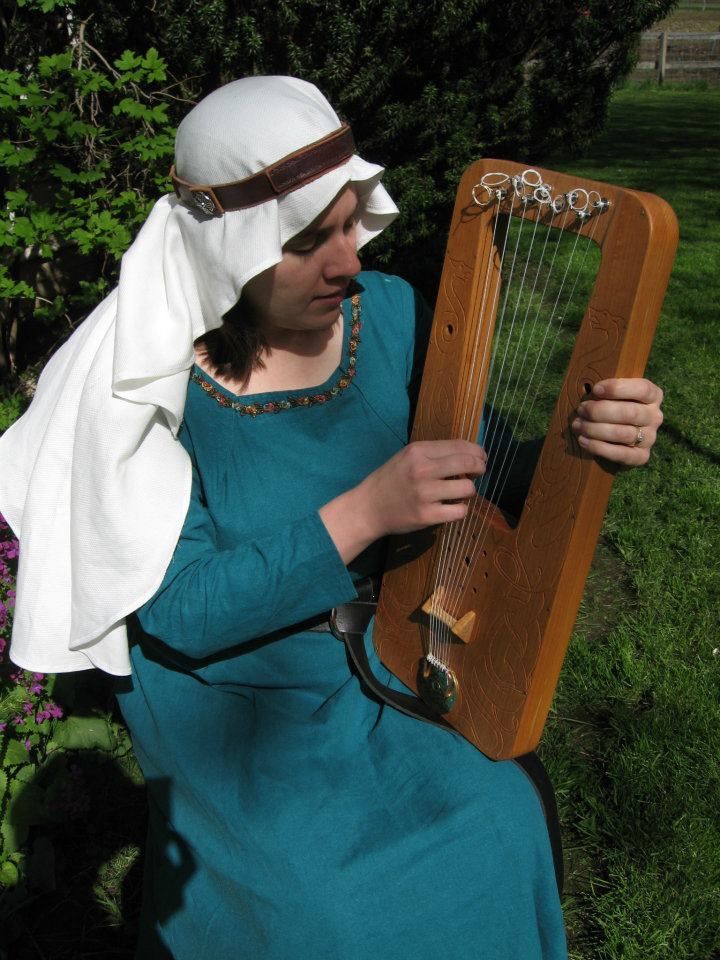
Day One
My husband helped me draft the basic design onto the wood. I selected a Hemlock board (a coniferous softwood native to North America and Eastern Asia, that becomes more of a hardwood as it ages) on the basis of cost and the fact it was the most responsive of the boards I looked at. When I placed my ear next to it and tapped, the board easily carried the sound and vibration along its length. By contrast, the oak and maple boards (traditional instrument making hardwoods) seemed sluggish, in addition to being more expensive and smaller in size. Not having much experience in lutherie, I'll admit I'm kind of swagging it. I had the opportunity once to play on a three thousand dollar guitar and I remember how it sang along it's entire length when strummed or tapped, like the whole instrument vibrated. I figure by picking a board that "sings" when tapped, I'll have a better chance of the final product turning out with those properties than if I have to force it to "sing" through the process.
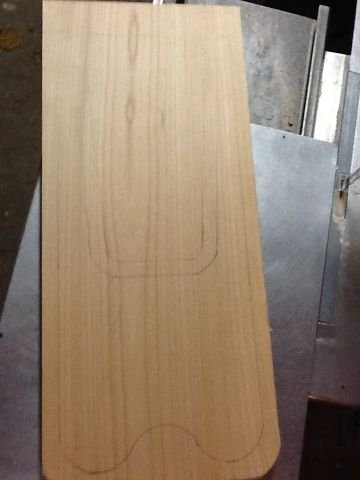
That evening my husband helped me cut out the basic shape with a band saw and a chop saw, and I took up initial sanding with a Dremel. Being a novice woodworker, I elected to go ahead and use modern tools to help make the process easier. However, I also wanted to do as much of the crafting by hand as possible, to preserve the "spirit" of the project.
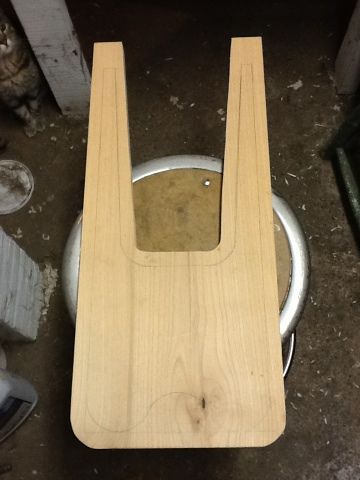
At this point, I made the decision to not do the traditional body + soundboard veneer design due to availability of materials. While I could get thin plywood to use for the soundboard, I refuse to use basic grade plywood on the grounds it doesn't sound as good. This instrument is already challenged enough by my lack of knowledge; why challenge it any further by using sub-par materials? Therefore, I made the call to sandwich a front and back together, using a router bit to help carve out the resonating chamber. Should this work, it will create more space in the body cavity for resonance and sound production. On the plus side, solid wood has better resonance properties which get better with age (it's why "solid top" instruments often fetch three times the price of even the best laminate instruments; a solid will sound better over the years, whereas what you hear with a laminate will not change from the day you pick it up to the day you die).
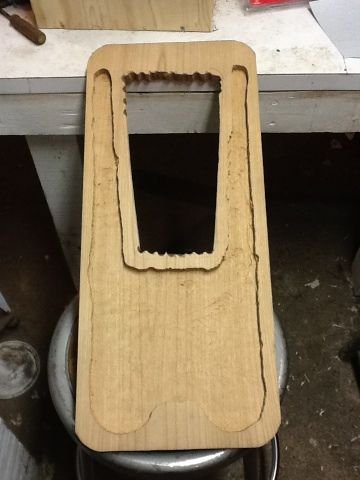
Day Two
I spent about an hour sanding with both sandpaper and the Dremel, smoothing out the soundboard sections and we smoothed out the inside walls with a woodworking chisel. LOTS of sanding and hand work to do!
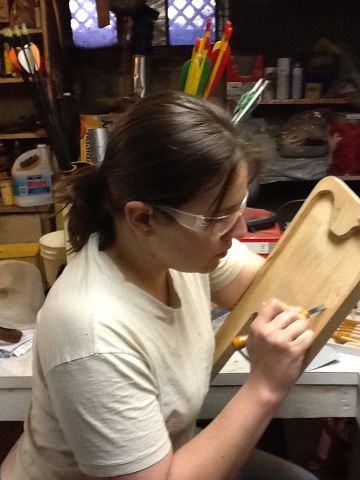
I settled on a set of Grover banjo tuners; they have a straight design more like traditional pegs and sport dark tuning knobs. Plus, Grover tuners have the quality without breaking the bank. This is important, especially since I will have to buy two sets to get enough for the six-string design I'm planning on.
At this time, I still had no idea how to do the tailpiece. I saw a design on ancientmusic.co.uk that simply uses heavy cord for the tailpiece -- no special, carved wood piece -- which I like for the fact the less parts you have, the less things can go wrong. Plus, I can retrofit it to the carved tailpiece if I need to.
I purchased Tung Oil at the local lumber store for the finish. After researching various methods of finish for instruments, I opted for this because an oil finish is period-correct and while not necessarily available in Anglo Saxon Europe (it comes from the Tung Tree native to China), it was on the shelf. The truly authentic Walnut Oil was not. Another reason for an oil finish is that as durable as polyurethane finishes are, they're real iffy in a musical application. Some of them are okay, but some can decrease resonance properties, and trying to figure out which one is which is terribly difficult. Plus, I have an abhorrence for super-shiny instruments. They show too many fingerprints! An oil finish tends to give wood an appealing "soft" look.
@heatherthebard Hey heather be careful with reposting your older posts. Cheetah is a bot that flags posts for plagerism and it can be a huge hassle to get in contact with them to explain that you are not actually plagerising, that its your own work. I would pull the photos and maybe re-write the whole post or something. You just don’t want Cheetah on your ass.
That is a good point. Yes, this is all my own work (even if a bit old, lol). I posted the pics because you can tell it’s me in them (the art photos I’ve posted, my profile pic etc). :) I will keep that in mind for the future.